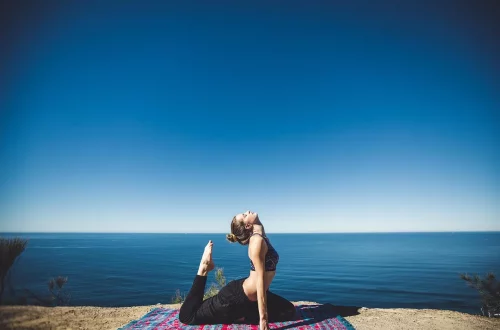
Exploring the Art of Fitness: The Naked Athletic Male Aesthetic
In a world increasingly focused on aesthetics, the concept of fitness has transformed into an art form that emphasizes not only physical capability but also visual appeal. The rise of the naked athletic male aesthetic encapsulates this evolution, where the human body is celebrated as a canvas of strength, grace, and beauty. This phenomenon extends beyond mere physical fitness; it intertwines with cultural perceptions of masculinity, self-expression, and the pursuit of an idealized form.
The naked athletic male aesthetic challenges traditional norms, inviting discussions about vulnerability and confidence. It encourages individuals to embrace their bodies in their most natural state, promoting an ethos of authenticity and self-acceptance. Moreover, this aesthetic is not merely a visual spectacle; it reflects a broader movement towards body positivity, where all forms and types are acknowledged and respected. As we delve deeper into this captivating subject, we uncover the intersections of art, fitness, and the human experience, revealing how they shape our understanding of beauty and health.
The Intersection of Art and Fitness
The relationship between art and fitness is complex and multifaceted. Throughout history, the human form has been a central subject in art, from the sculptures of ancient Greece to the paintings of the Renaissance. These artistic representations often celebrate physical prowess and beauty, showcasing the idealized male body as a symbol of strength and virtue. In contemporary culture, this connection has evolved, as fitness enthusiasts increasingly regard their bodies as living art—sculpted through rigorous training and discipline.
Fitness, much like art, requires creativity and expression. The routines and practices involved in achieving a fit physique are not merely mechanical; they are opportunities for individuals to express their identities. From the choice of workout attire to the selection of music that fuels a gym session, each decision contributes to a personal narrative. This narrative becomes even more pronounced in settings where individuals choose to showcase their bodies, such as bodybuilding competitions or fitness photoshoots.
Furthermore, the rise of social media has amplified this convergence between art and fitness. Platforms like Instagram and TikTok have become galleries where individuals curate their fitness journeys, sharing their progress and celebrating their bodies. The aesthetic appeal of a well-defined physique, captured in a striking pose or natural light, has become a form of artistic expression that resonates with audiences. This digital age allows for a democratization of art; anyone can become an artist of their own body, inspiring others to appreciate the beauty of fitness.
Redefining Masculinity: Vulnerability and Strength
The naked athletic male aesthetic not only celebrates physicality but also challenges conventional notions of masculinity. Historically, masculine ideals have often emphasized stoicism, strength, and emotional restraint. However, this modern interpretation encourages men to embrace vulnerability as a component of strength. By presenting themselves in a natural state, free from societal constraints, individuals can redefine what it means to be masculine.
This shift toward embracing vulnerability can be empowering. It allows men to express their emotions and insecurities, breaking down barriers that have long been associated with traditional masculinity. The naked athletic aesthetic becomes a powerful statement—an act of defiance against outdated norms that dictate how men should look and behave. By showcasing their bodies in a way that emphasizes both strength and vulnerability, individuals contribute to a broader conversation about mental health, self-acceptance, and the importance of emotional expression.
Moreover, this evolving perception of masculinity fosters a sense of community and solidarity among men. As more individuals share their fitness journeys and body images, they create spaces where acceptance and encouragement thrive. This camaraderie can help combat issues such as body dysmorphia and mental health challenges, as individuals realize they are not alone in their struggles. In this way, the naked athletic male aesthetic serves as a catalyst for positive change, encouraging men to embrace their authentic selves.
The Role of Body Positivity in Fitness Culture
The body positivity movement has gained significant traction in recent years, advocating for the acceptance of all body types and challenging societal beauty standards. Within the context of the naked athletic male aesthetic, body positivity plays a crucial role in reshaping how individuals perceive their bodies and fitness journeys. It emphasizes that beauty comes in various forms, and fitness should not be restricted to a narrow definition.
By promoting body positivity, the fitness community encourages individuals to celebrate their unique shapes, sizes, and abilities. This inclusivity fosters a broader understanding that fitness is not solely about achieving a particular aesthetic but about overall health and well-being. The naked athletic male aesthetic can thus be viewed as a celebration of diversity, where every individual is encouraged to embrace their body, regardless of societal expectations.
Additionally, body positivity aligns with the concept of holistic health. It emphasizes the importance of mental and emotional well-being, recognizing that true fitness encompasses more than just physical appearance. Engaging in fitness should be about cultivating a positive relationship with one’s body, rather than striving for an unattainable ideal. This shift in perspective encourages individuals to focus on their personal progress and health, rather than comparing themselves to others.
As the fitness landscape continues to evolve, the naked athletic male aesthetic stands as a testament to the power of self-expression and acceptance. It encourages individuals to honor their bodies as they are, fostering a culture that values health, authenticity, and diversity.
Embracing the Journey: Personal Growth Through Fitness
Fitness is often depicted as a destination, a goal to be achieved through hard work and determination. However, the journey itself is where true growth occurs. The naked athletic male aesthetic highlights the importance of embracing this journey, celebrating not just the end result but every step taken along the way.
As individuals embark on their fitness journeys, they encounter challenges, setbacks, and triumphs. Each experience contributes to personal growth, shaping not only their physical capabilities but also their mental resilience. The aesthetic encourages individuals to take pride in their progress, regardless of how it aligns with societal standards. By focusing on the journey, individuals can cultivate a sense of self-worth that is independent of external validation.
Moreover, the journey of fitness fosters a deeper understanding of one’s body and its capabilities. As individuals learn to appreciate their strengths and weaknesses, they develop a more profound connection with themselves. This self-awareness can lead to transformative experiences, promoting overall well-being and confidence. The naked athletic male aesthetic becomes a visual representation of this journey, showcasing the dedication and perseverance that goes into achieving a fit physique.
In conclusion, exploring the naked athletic male aesthetic reveals a rich tapestry of cultural, emotional, and artistic dynamics. It challenges conventional notions of masculinity, fosters body positivity, and emphasizes the importance of embracing the fitness journey. Ultimately, this aesthetic serves as a powerful reminder that fitness is not just about physical appearance, but about celebrating the human experience in all its forms.
**Disclaimer:** This article is not intended as medical advice. For any health concerns or medical issues, please consult with a qualified healthcare professional.




